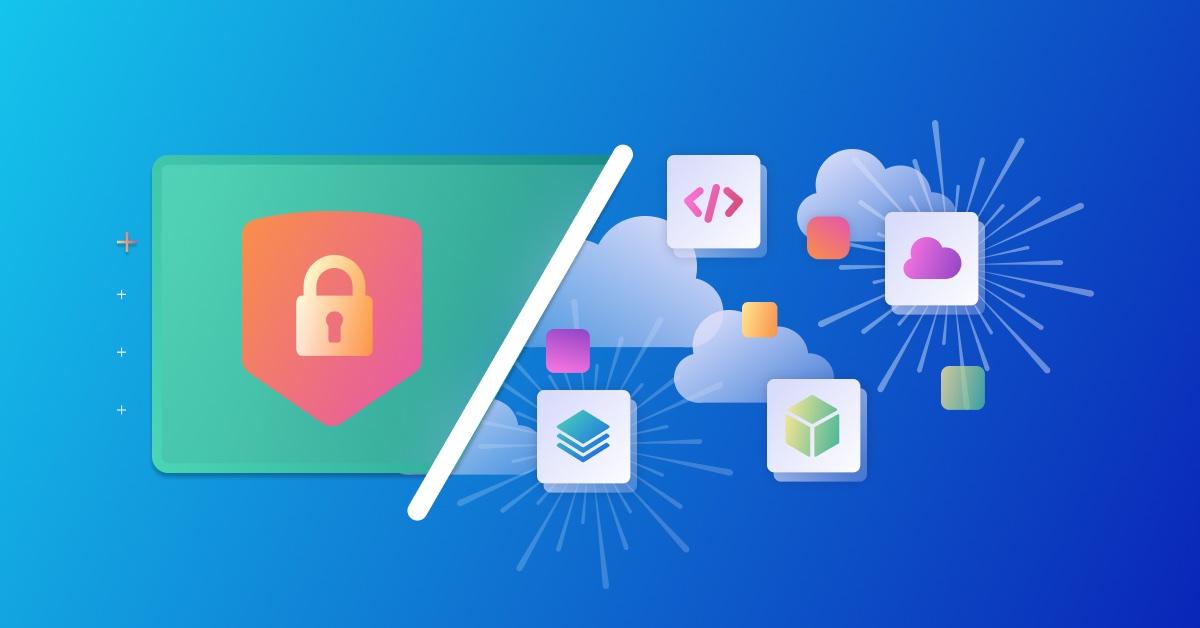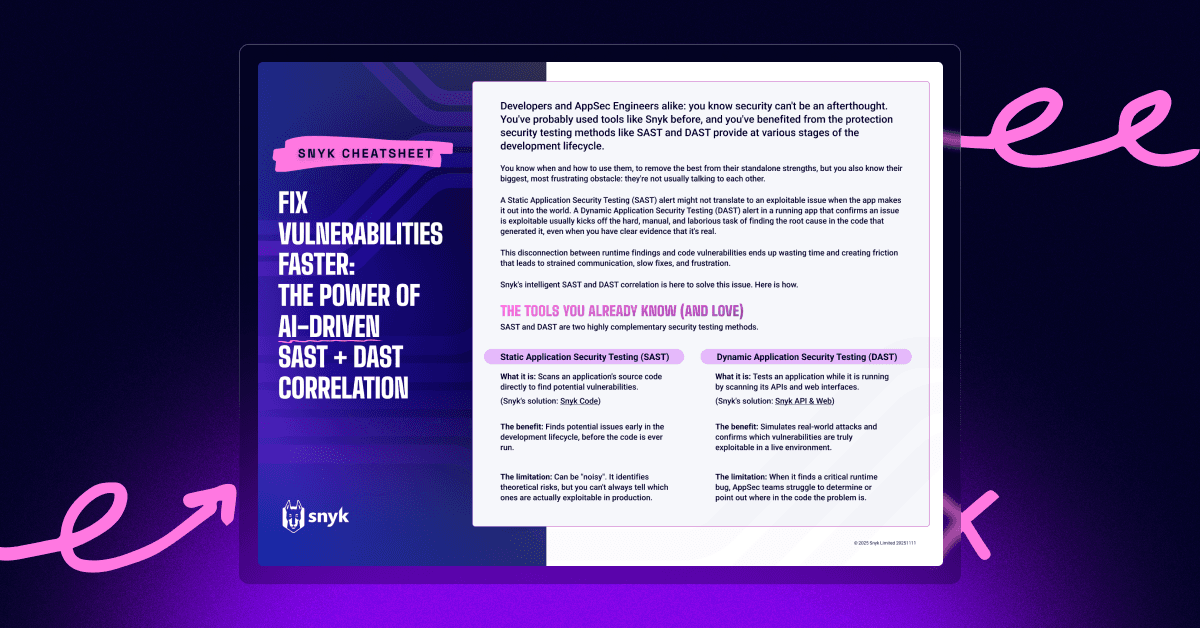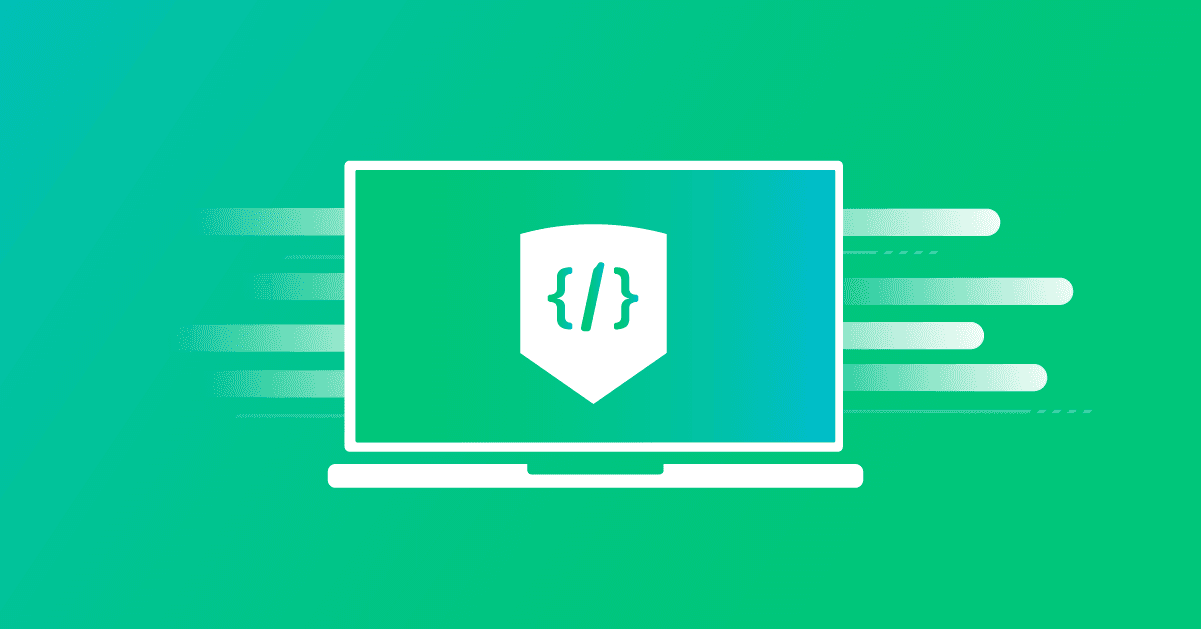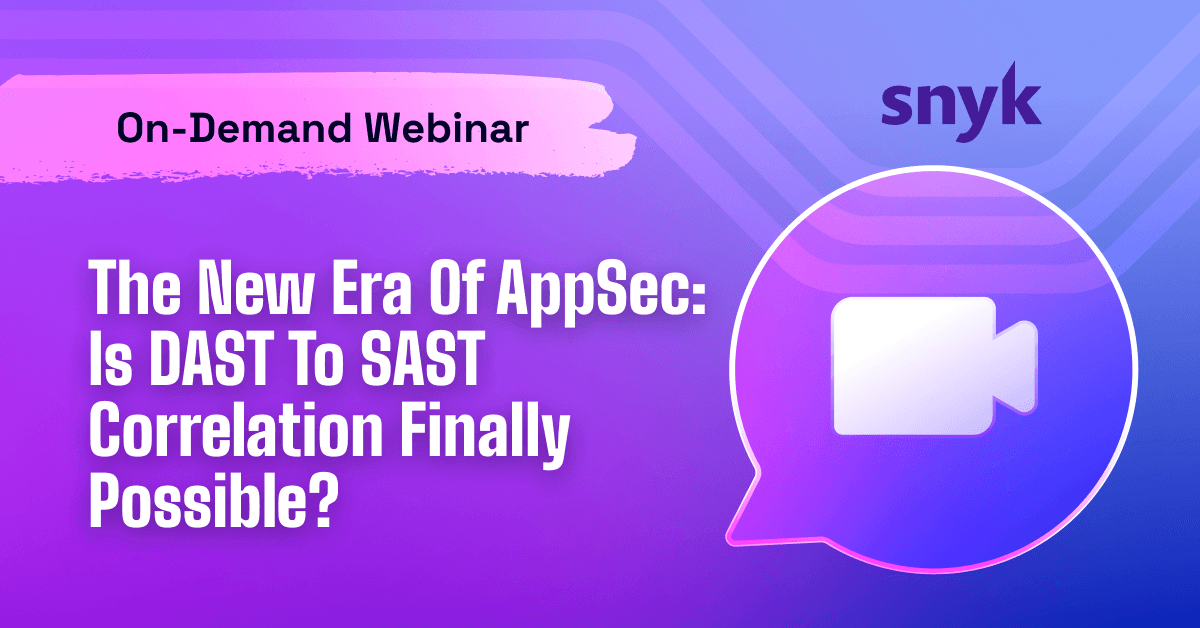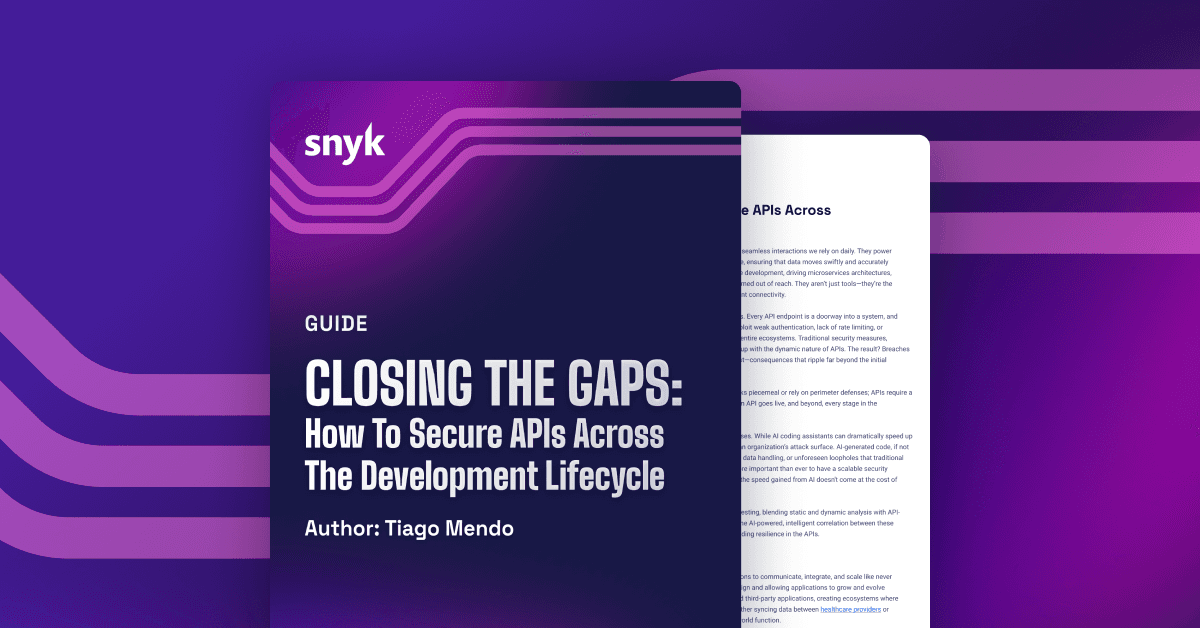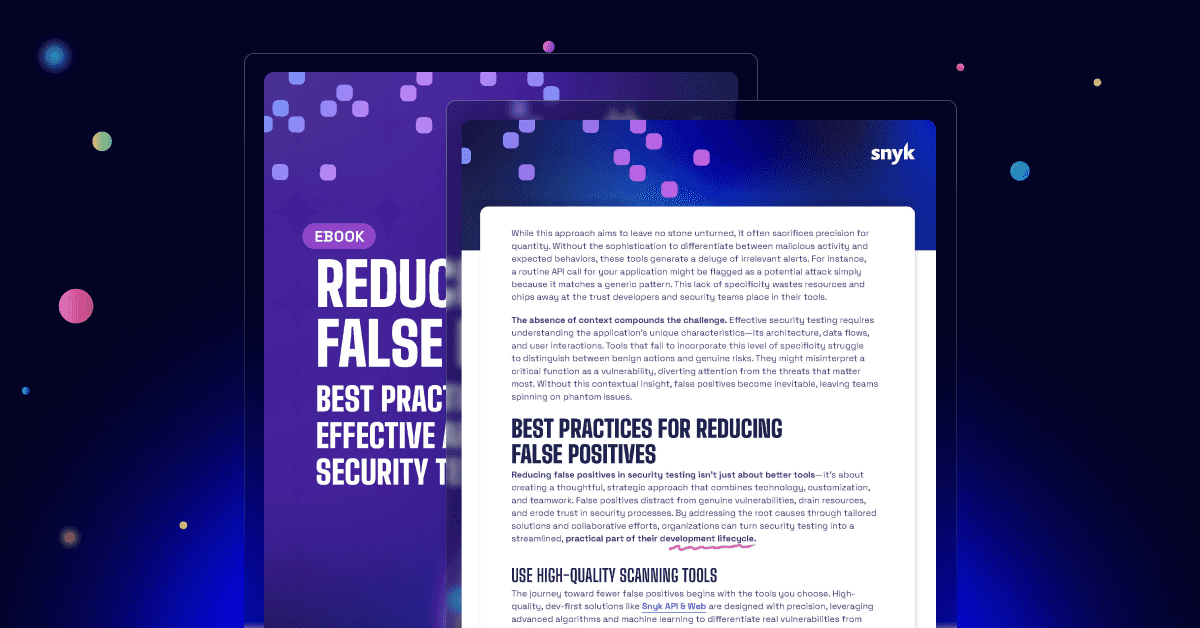
Recursos





Mostrando 1 - 24 de 623 recursos
NPM Security Best Practices: How to Protect Your Packages After the 2025 Shai Hulud Attack
Harden your npm environment against supply chain attacks like Shai-Hulud. Learn 12 essential best practices for developers and maintainers, covering post-install scripts, 2FA, provenance, and deterministic installs.
Detecting & Patching Vulnerabilities with Continue and Snyk MCP
Integrate security directly into your AI coding workflow. Learn how to use the open-source Continue AI coding assistant with Snyk Studio's Model Context Protocol (MCP) to automatically detect, fix, and verify high-severity vulnerabilities like SQL Injection, all without leaving your IDE.
Personalization in Vibe Coding
The rise of vibe coding and personalized AI agents is transforming development, but the 'Vibe Coding Hangover' introduces critical security and maintainability risks. Discover how to move from unreviewed, risky code to responsible, secure AI-assisted development.
Defending Against Glassworm: The Invisible Malware That's Rewriting Supply Chain Security
Defend against Glassworm, the invisible malware rewriting supply chain security. Learn how anti-trojan-source detects and prevents these Unicode attacks, protecting your VS Code extensions and credentials.


